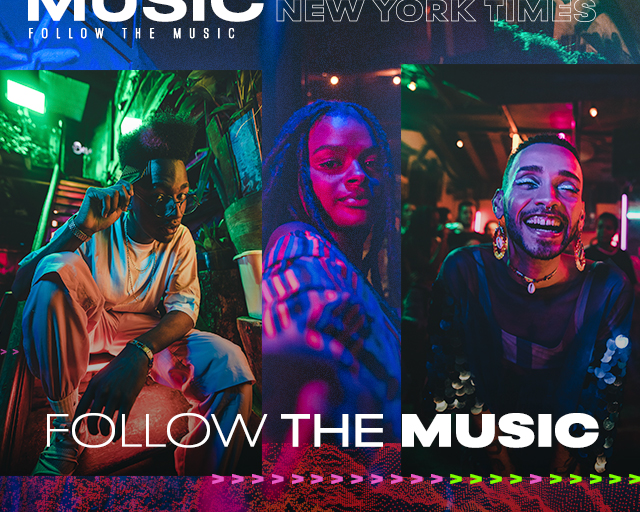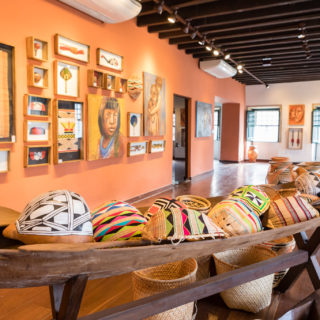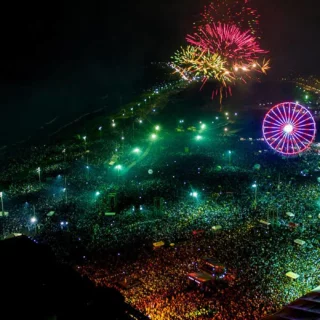
Let the sound of Salvador carry you
“Music – from Greek ‘musiké téchne’, the art of muses – is an art form that is a combination of various sounds and rhythms, following a pre-organization over time.” The description of the word music in Salvador gains a much broader connotation than the formal one in a dictionary. Music here is territory, it is encounter and resistance. Rhythm and melody are everywhere, you just need to walk on the streets and let the sound carry you.
São Salvador da Bahia, the Latin black mecca, one of the largest black majority cities outside Africa. Here colonialism, which tried to erase the traditions of the black diaspora, gave rise to a strong religious syncretism, such greatness of the African mother religions. There is no popular festival where orixás and Catholic saints are not celebrated in communion. It is to the sound of drums and atabaques that music unites so many universes, mixing everything with a singular balance between the sacred and the profane: where faith, good food and music meet.
And what a land rich in sounds. From samba, bossa nova and Brazilian popular music, to axé, rock, rap and the Bahian pagode. Artists like Batatinha, Riachão, Chocolate da Bahia and Nelson Rufino, João Gilberto, Dorival Caymmi, Mateus Aleluia, Gilberto Gil, Caetano Veloso, Gal Costa, Maria Bethânia, Baby do Brasil, Lazzo Matumbi, Margareth Menezes, Carlinhos Brown, Ivete Sangalo, Daniela Mercury, Xanddy Harmonia, Léo Santana and inspiration for the new generation like BaianaSystem, Luedji Luna, ÀTTØØXXÁ, Baco Exu do Blues, Xênia França and Larissa Luz. Better to stop here, otherwise this text will need a few more paragraphs just talking about so many talents.
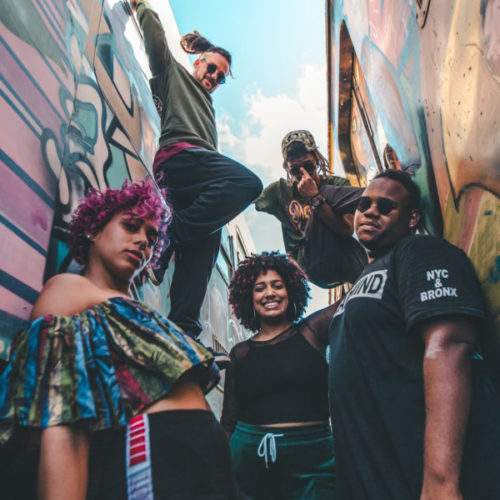
It’s exactly about this musical cauldron that this movie is about. Follow the Music is an invitation to surrender ourselves to this vibrant city through music. A loving project that shows the many cities that make up Salvador, the profusion of rhythms and their multiple faces. The intention is to make you even more curious to know Salvador deeply, through good music and breathtaking images. Get ready, because after watching, you will want to go around dancing everywhere.
Follow the Music strolls around the city showing people dancing at sights such as Rio Branco Palace, Lacerda Elevator, Nossa Senhora D´Ajuda Church, Barra Beach, and also in the Gamboa Community, in the Northeast of Amaralina, on the trains that pass through the Railroad Suburb and at the ABOCA Arts Center, in the charming neighborhood of Santo Antônio Além do Carmo. The dancers and characters that were invited have excellent stories of representativeness in the city, bringing to the film some of their personal work and history.
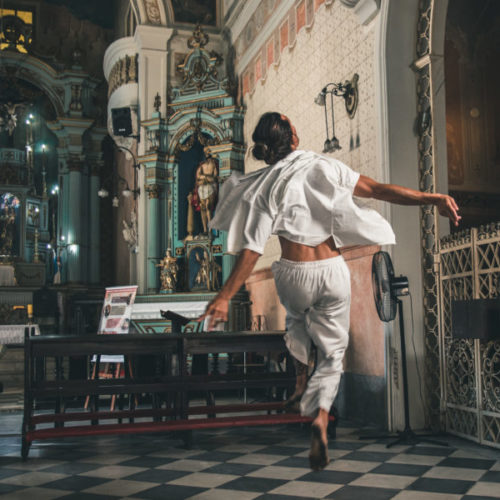
The soundtrack was developed by João Gabriel Ubunto with significant instrumental additions by Letieres Leite, Chibatinha (ÀTTØØXXÁ) and Nanny Santos (Cortejo Afro). Something interesting is that, with each scene, new instruments are being added to the music and it goes changing during the clip. If you watch, you feel the energy coming in the ears, the heart follows the atabaques’ beat until it is inevitable to start beating on the table or even getting up to dance along. With each scene, a different place of the city and a new sound are presented.
This clip talks a lot about representativeness
The musician, producer and DJ, João Gabriel Ubunto lives in São Paulo, but he is soteropolitano from Itapuã, neighborhood known exactly for being one of the most musical in Salvador. He plays a little of everything, but enjoys drums and percussion the most. João considers essential in his work of music production to have a harmonic notion. Samba de roda, pagode and ijexá are the main elements used in his creations. The soundtrack in this clip is made by him.
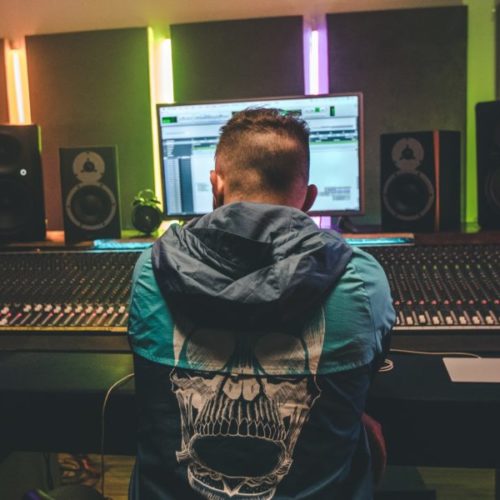
For the Follow the Music project, the DJ merged regional musical elements inspired by a folkloric manifestation of Bahia called “Caretas” – traditional both in the recôncavo and on the northern coast and interior of Bahia. “I used the base of the Caretas song and made an instrumental remix of that song. I put new elements in an organic percussion filling and new guitar and wind arrangements”, he says.
And that’s where the multitalented Letieres Leite’s flute comes in. The song created by Ubunto was played just a few times and Letieres had already taken the spirit and harmony, making interferences and brilliant solos. Letieres is a musician, educator, composer and arranger. He has won awards such as the 21st Brazilian Music Award (Best Instrumental Group and Revelation of the Year), Bravo Award! 2010 (Best Popular CD), Itaú Cultural 2010, Natura Musical 2010, O Globo (Best of Music 2010), among many others. He has already conducted Hermeto Pascoal’s big band (with Hermeto himself on piano) at the Bahia Instrumental Music Festival in 2004.
The Bahian is the creator of the award-winning big band Letieres Leite & Orkestra Rumpilezz, formed only by wind and percussion musicians who made a research based on the fusion of rhythms of Afro-Bahian music roots and its universal branches, with the jazz dynamics. With the Letieres Leite Quintet, he makes composition and improvisation based on the same rhythmic principles. There is also the social project Rumpilezzinho – which trains young people under the guidance of the Maestro. Besides that, he has worked with great artists such as Maria Bethânia, Gilberto Gil, Elba Ramalho, Caetano Veloso, Timbalada, Daniela Mercury, Elza Soares, Stanley Jordan, Carlinhos Brown, Olodum and singer Ivete Sangalo.
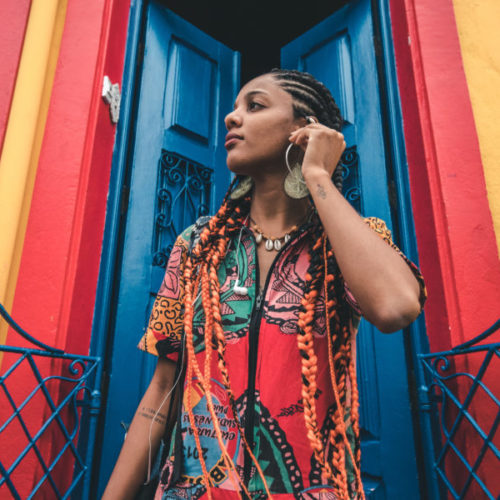
Two other partnerships were indispensable for the song “groovar”: Nanny Santos and Chibatinha. Nanny has been in the music world since she was 11, and the drum that echoes as a sound of protest is also her code name on social networks: the girl and the drum. She plays in the Cortejo Afro group and has recently performed with Orkestra Rumpilezz at the Spring Festival. Chibatinha is a member of the band ÀTTØØXXÁ, owners of a sound beat also known as “neo-pagodão” or Pagode of the future. The band has in its formation Rafa Dias, responsible for synthesizers and beats, Oz (voice), Raoni (voice) and Chibatinha (guitar).
Among the many personalities who showed their dance in the video is Edilene Alves, who was Goddess of Ebony in 2009. After 10 years since she was elected, her eyes still shine as she tells about the importance of the Afro Block Ilê Aiyê in her life. Edilene appears in the clip dancing with the traditional dress of the Goddess of Ebony, with ties of the designer Dete Lima herself, who is also one of the leaders that have formed the block. “Only Dete Lima can make this outfit, it’s all tied to her own body. Dressing for dancing is part of the ritual, it’s when everything that is internalized comes out, because the dance is completely affective, it brings out your truth”, she says.
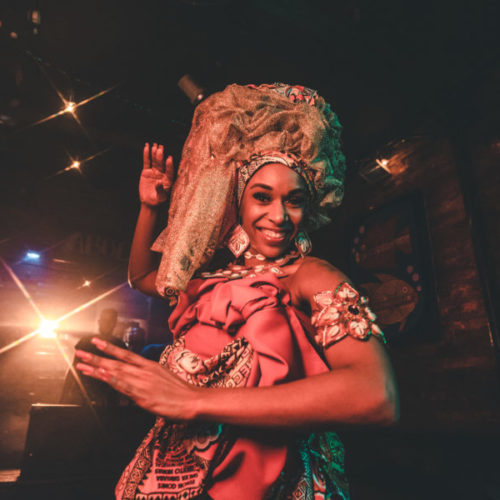
The Afro blocks’ drum beat, which is chilling, thrilling and represents Bahia so much, is represented here by Olodum. The group, which gained different sounds and transformed African musicality based on percussion, is a living expression of samba-reggae, a rhythm created by Neguinho do Samba. The invited personalities were Bira Jackson and Andreia Reis. Bira is the musician who plays alongside Michael Jackson in the music video “They Don’t Really Care About Us,” where Olodum made a major appearance. Andreia appears on Follow the Music showing the female strength that has been growing in the group. She is a conductor of the Olodum Band and the first woman to conduct a mostly male percussion band. Andreia will be one of those honored at Carnival 2020 with the theme: “Mãe, Mulher, Maria, Olodum: Uma História das Mulheres” (Mother, Woman, Mary, Olodum: A women’s story).
https://www.salvadordabahia.com/en/experiences/olodum-2/
Also invited was Spadina Banks, one of today’s most popular Drags. She is part of an effervescent scene of Salvador that has been standing out among other cities in the country. “We are part of a generation of highly politicized artists who work together to value the spaces of resistance. We carry this feeling to the stage, the speech is in every presentation”, explains Douglas Nassife, who has been performing as Spadina Banks for four years.
Ron Timas de Sena, Monalisa Brandão Lima and the little Bem and Tom represent the orixás. With much respect, they recount the origins of percussive rhythms showing that the African Gods also transit the city day by day. Exu, orixá of communication, guardian of the street, king of dance, is represented by Ron. Yemanjá, Queen of the Waters, one of Brazil’s most popular divinities, the “Mother whose children are fish,” the beautiful woman who receives gifts such as lavender, mirror and flowers every February 2, is represented here by the beautiful Monalisa, in the sea at Barra. The little Bem and Tom, who play in the alleys of Feira de São Joaquim, allude to the Ibejis, the joyful brothers who bring harmony and happiness to their environment.
Josineia, Luma and Loo, the Nascimento family, appear in a grand scene of great beauty. Mother and daughters represent wisdom, endurance and empowerment. Joseneia is an educator and has always taught her daughters that education is the foundation of everything. Luma and Luana are known for their keen discourse on social networks, taking on an important role in discussing issues such as racism, feminism, acceptance and entrepreneurship. The family is completely linked to Bahian musicality, since Luma and Loo’s father is Paulo Roberto Nascimento, president and founder of the Afro Block “Os Negões”, one of the most respected institutions in the world in social and racial politics of Salvador.
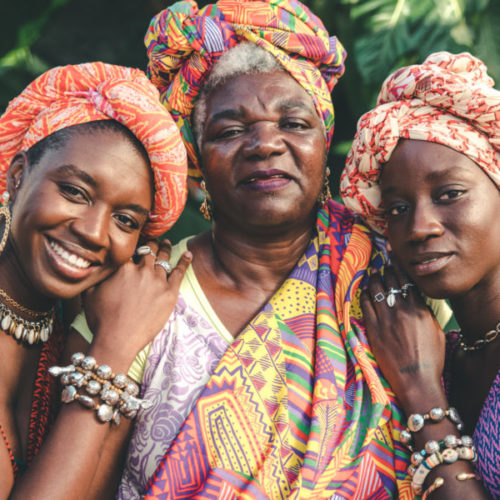
All three are dressed by Loo clothing brand DressCoração, one of the darlings of the city’s fashionistas. The scene also had the composition of fabrics printed by Goya Lopes. Goya is one of the great Bahian designers, known for telling ancestral stories through her prints.
Between one recording and another, the entire team had an excellent meal at a restaurant within the Solar do Unhão Community, which is attached to the Museum of Modern Art (MAM). Dona Suzana’s restaurant is known for the owner’s charisma and her stingray moqueca. Learn more about her and her delicacies at this link.
Who played an important role in making sure everything went smoothly was Adriano de Jesus, Vice-President of the Gamboa de Baixo Community Residents Association. He said the Gamboa neighborhood is characterized by the coastal community, secularly inhabited by fishermen, facing the All Saints Bay, close to downtown. The place became even better known after the recording of the music video for “Bola rebola”, by Anitta. “There’s a lot going on here. Suzana’s Solar restaurant and Monica’s bar here in Gamboa bring many residents from other neighborhoods and many tourists. Moreover, there is this wonderful sunset here”, explains Adriano.
Many other nice people participated dancing in different places of the city, such as Carina Mackels, the Belgian who came to learn Portuguese in Salvador and fell in love with the city. She loves bossa nova and is a fan of João Gilberto. The capoeirista Igor dos Santos Souza, who left everyone openmouthed with his expressive movements. The dancer Juliana Marques, who managed to unite two worlds: she danced classical ballet to the sound of the Bahian pagode in a contemporary style. The girls representing urban dance movements such as Roda Urbana, Flow Minas, InRitmo Crew and AfroRaga, represented here by Adrielle Bishop, Thalita Farias, Priscila Nepomuceno and Adriele Souza. Also Paulo Alves, Deco Oliveira and Neilton Ajôhir, VIP ballet dancers. Deco and Neilton were some of the dancers who, among many other works, performed the choreography of the song “Elas Gostam (Popa da Bunda)” which rocked in the country with ÀTTØØXXÁ and Márcio Victor Psirico after being the hit of Salvador Carnival in 2018.
Turn up the sound and have fun watching this crowd dance at Candeal, Santo Antônio Além do Carmo, Pelourinho and Feira de São Joaquim. There is also a great group of skaters by Comércio, skating in the City Park and enjoying the beach at Barraca do Lôro in Stella Maris. Come with us and follow the music.
By Fernanda Slama
Portal Content Coordinator of salvadordabahia.com

